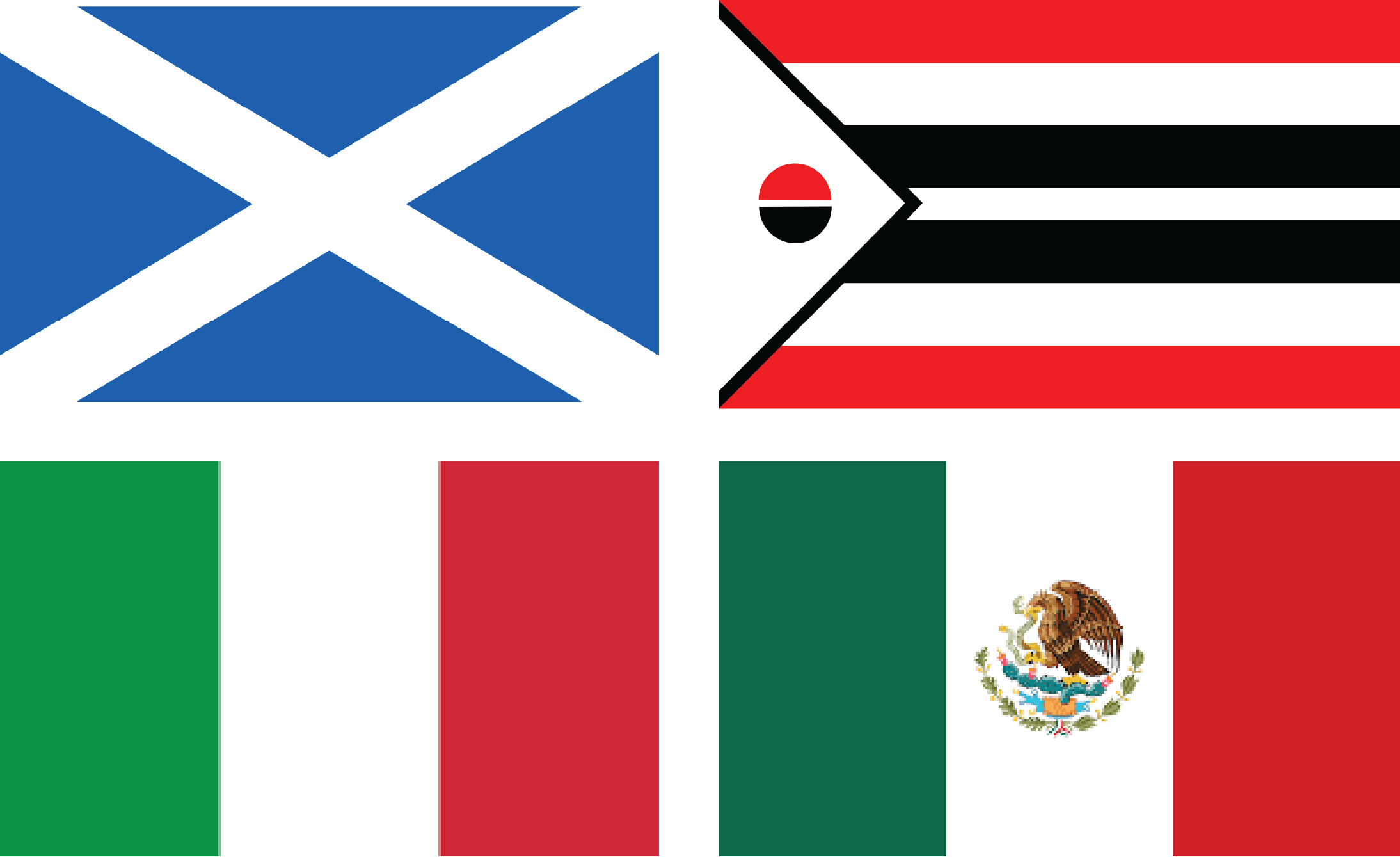The Flagpole Vol 6: History at Higher Ground
The flag for Denver’s Highland neighborhood.
When I started designing a flag for the Highland neighborhood, I knew it couldn’t be just one thing. The neighborhood itself isn’t.
Vexillologist’s note: It’s the Highland neighborhood, not “The Highlands”. And yeah, I know that’s what everyone calls it, and I guess that’s okay. Names shift just like the buildings and people in a neighborhood. That’s part of its story — it changes, and so do we.
Highland rises above the floodplain at the confluence of the South Platte River and Cherry Creek. Long before there was a Denver, this was the site of an Arapaho encampment, chosen like most good places because of its geography. In 1874, the Scottish Village took root here as part of Highland Park, one of the city’s first suburbs, also chosen for its geography: upwind from the smelters that powered Denver’s early boom. Waves of Italian and Latino residents followed, each adding their own layers of culture and community. And now? Much maligned slot-homes, cranes in the skyline, and trendy restaurants on every corner. A place that keeps shifting, yet still holds pieces of everything it has been.
If a trendy restaurant in a former mortuary doesn’t show how much a neighborhood has changed, I’m not sure what does.
I didn’t want the flag to pick one part of the story. I wanted it to hold as much of it as I could. No easy task.
So I started with the basics. The layout nods to the Scottish flag, one of the neighborhood’s earliest identities. The design is also built out of visual elements inspired by the Arapaho tribal flag, to honor the people who were here first.
Then came the colors. Green, white, and red for both Italy and Mexico. A shared palette that reflects the deep roots both communities have had in the neighborhood. Each piece is there for a reason, serving as a reminder that neighborhood identity is always shaped and being shaped by the people who call it home.
The flags of Scotland, the Arapaho Nation, Italy, and Mexico
This one stuck with me more than most. Maybe because it felt like I was designing for something bigger than just a place. Highland made me think about how neighborhoods are layered. Sometimes we treat them like fixed points on a map, but really they’re collections of stories, languages, buildings, and smells from the kitchen. And sometimes you don’t always notice what’s changing until it’s already gone.
That gets under a lot of people’s skin. I’ve lived in Denver long enough to watch block after block turn into something new. It’s hard to watch the places people built get pushed aside. And it’s frustrating when a lot of versions of “change” look the same.
But over time, my feelings have shifted. I still get upset sometimes, but more than anything, I feel a pull to pay attention. To slow down and notice what came before. That’s really what this flag became: a small way to mark the layers, to keep them visible, to say this place mattered, and it still does.
Highland isn’t the only neighborhood like this. Most of Denver is changing. Most of it has already changed. But if we can carry forward the memory of what and who was here, maybe we can build what comes next with a little more intention.
That’s the hope behind this one.
I’ve produced a limited run of 10 flags, ready to fly, now available in the Narrative Designs store. A small tribute to Highland’s ever-changing story.
More soon.
—Steve
Explore all the Flags of Denver and learn the stories behind each design → View the collection



